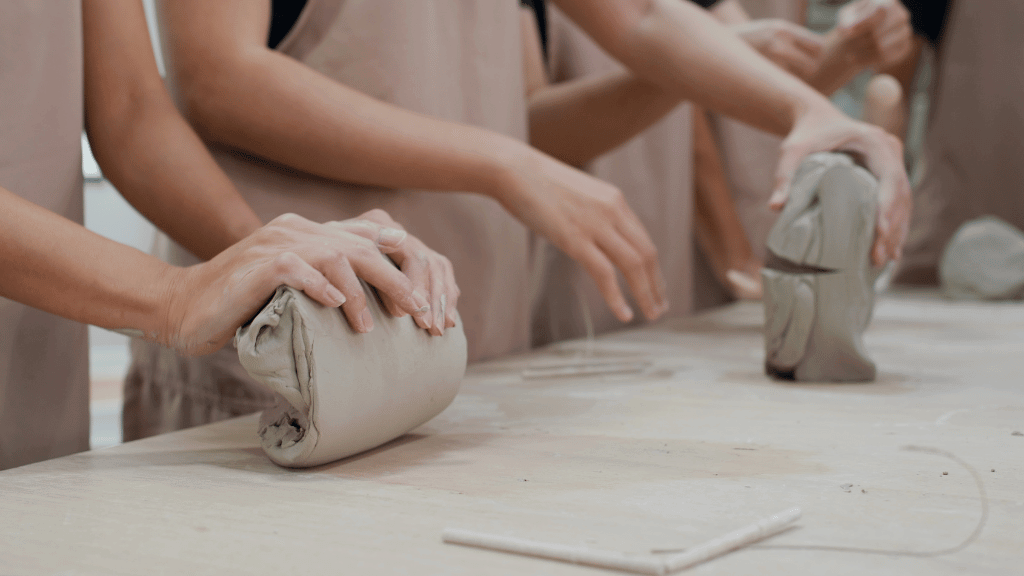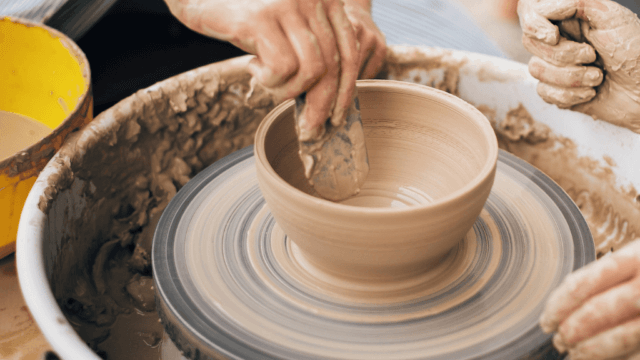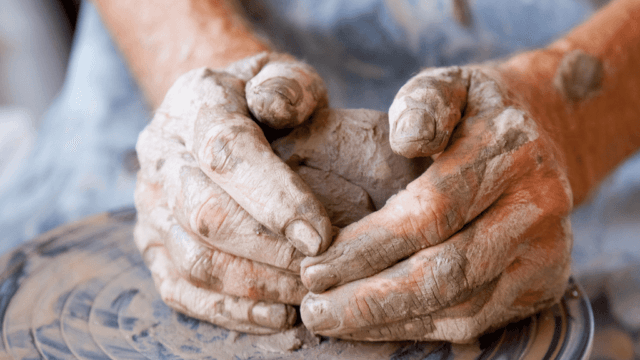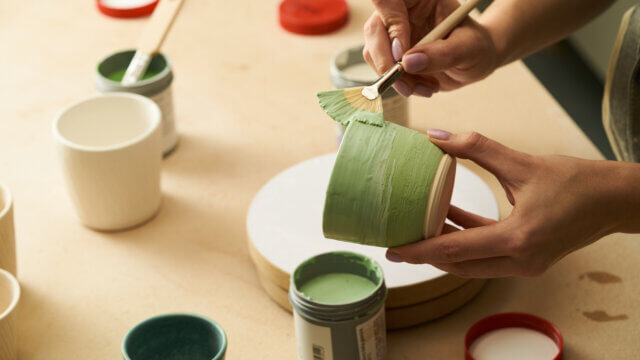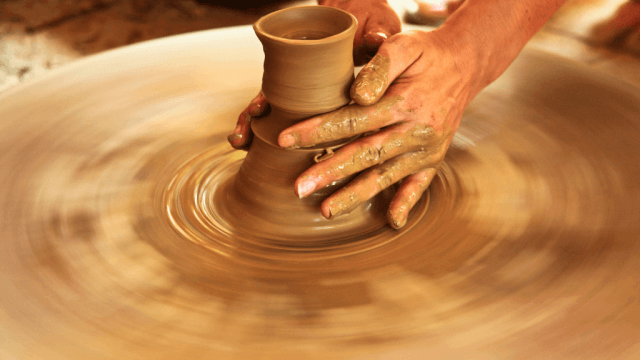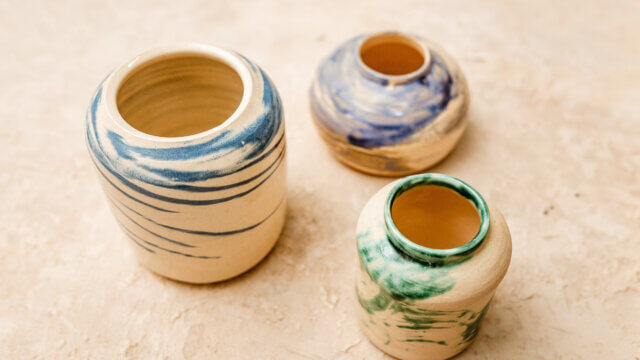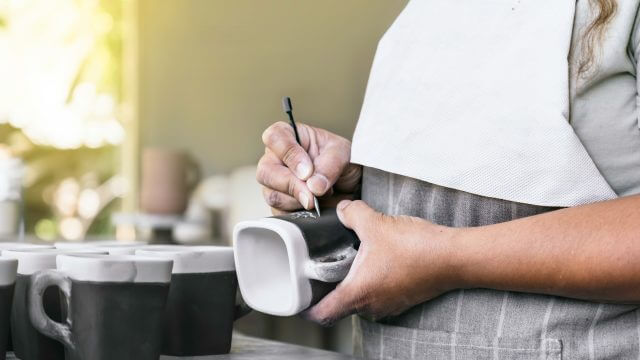To make pottery clay, start by digging up clay-rich soil, then mix it with water to form a pliable consistency.
Next, remove impurities using a simple sieving process, allow the mixture to settle, and remove excess water.
Finally, wedge the clay to remove air bubbles and create a homogenous texture, making clay ready for use in pottery projects.
Finding and Preparing Raw Clay
Begin by locating a clay deposit in your area, such as a riverbank, construction site, or a resident’s yard.
Make sure to get permission before digging.
Use a shovel to gather clay-rich soil, aiming for areas where the soil is a darker color and feels sticky.
Creating a Clay Slip
Combine the collected soil with water in a large container.
Stir the mixture until you achieve a smooth, homogenous consistency, forming a clay slip.
This step aids in separating impurities like rocks, roots, and leaves.
Settling and Sieving Process
Allow the clay slip to settle undisturbed for 24 hours.
Afterward, decant the excess water from the top while keeping the clay at the bottom.
Pour the clay slip through a fine mesh sieve to remove any remaining impurities.
Monitor the clay thickness and add water if it gets too thick during this process.
De-Watering Clay
Line a flat surface, such as a table, with a cloth or towel.
Spread your sieved clay slip on the cloth and let it remain there for several hours up to a few days, depending on the weather and environmental conditions.
The goal is to allow excess water to evaporate, leaving a workable clay consistency behind.
Wedging and Storing Pottery Clay
Wedging Process
Once your clay has reached the desired consistency, it’s time to wedge it.
Wedging involves kneading the clay to eliminate air bubbles, distribute moisture, and create a uniform texture.
Use a clean, flat surface or a wedging table to work the clay into a round or rectangular shape for easier storage.
Proper Clay Storage
Wrap the prepared pottery clay in plastic or an airtight container, making sure no air reaches the clay.
Store it in a cool, dark place to prevent it from drying out.
Your pottery clay is now ready to be used for your creative projects!
Testing Pottery Clay Quality
Before using your homemade pottery clay for a project, it is vital to test its quality.
Roll a small piece of clay into a coil and wrap it around your fingers without breaking.
If the clay remains flexible and crack-free, it is of good quality and ready for use.
Additionally, you can create a small test piece and fire it in a kiln to assess the shrinkage rate and behavior of the clay during firing.
Adding and Experimenting with Additives
You can modify the properties of your homemade clay to suit your preferences.
Some possibilities include:
- Grog: Add crushed, fired clay (grog) to your pottery clay to improve its texture, decrease shrinkage, and reduce possible warping during firing.
- Colorants: Enhance your clay’s color by incorporating natural colorants, such as iron oxide, manganese dioxide, or copper carbonate.
- Decorative Inclusions: Mix small particles like sand, crushed shells, or fibers into your clay to create textured and visually intriguing surfaces in your work.
Reclaiming and Recycling Dried Pottery Clay
Don’t throw away dried or unfired clay! Simply break dried clay pieces into smaller chunks and soak them in water until they dissolve.
Stir the resulting mixture into a clay slip, and repeat the settling, sieving, and de-watering processes detailed earlier.
This strategy will save you money and reduce waste by salvaging unusable clay for future use.
Tips for Successful Pottery Projects
To achieve successful pottery projects using homemade clay, consider these helpful tips:
- Keep tools and work surfaces clean to prevent cross-contamination with other clay types or impurities.
- Be aware of the characteristics and limitations of your homemade clay, adjusting your project goals and expectations accordingly.
- Regularly consult reliable sources such as books, online forums, or local pottery shops for guidance and support.
- Consider joining a pottery community or attending pottery classes to improve your skills, network with other potters, and share techniques and tips unique to your region.
Frequently Asked Questions (FAQ)
In this section, we address a selection of common questions related to making and using homemade pottery clay.
These answers provide additional insight and guidance to help you succeed in your creative endeavors.
How can I ensure my raw clay is suitable for pottery?
Perform a simple field test by wetting your hands and working the soil into a flexible ball.
If the soil forms a dough-like consistency without cracking or disintegrating, it is likely suitable for pottery.
Further testing, such as firing a small piece in a kiln, will provide a clearer understanding of the clay’s properties.
Can I make pottery clay from store-bought powdered clay?
Yes, you can create pottery clay from powdered clay by hydrating and mixing it according to the manufacturer’s instructions.
This method is convenient and time-saving, offering more control over clay composition, consistency, and quality.
However, it is less cost-effective than sourcing clay from the environment.
How do I prevent homemade pottery clay from cracking during the drying process?
To minimize cracking, ensure even drying by alternating between covering and uncovering the pottery piece in a cool, dry environment.
Also, avoid rapid transitions in temperature and humidity.
Properly wedging the clay to remove air pockets and prevent uneven drying can help reduce cracking as well.
What is the ideal pottery clay consistency?
The ideal consistency for pottery clay is soft, pliable, and free from stickiness.
It should hold its shape when manipulated without cracking or tearing.
If your clay is too dry, add small amounts of water and mix until it reaches the desired consistency.
Similarly, if the clay is too wet, allow more drying time to achieve proper workability.
Can I mix different types of clay to create my custom blend for pottery?
Yes, you can mix different types of clay to create a custom blend that suits your preferences and project requirements.
Experiment with various proportions of clay types to achieve your desired consistency and firing characteristics.
Just remember to thoroughly wedge and blend the clays to ensure homogeneity.
